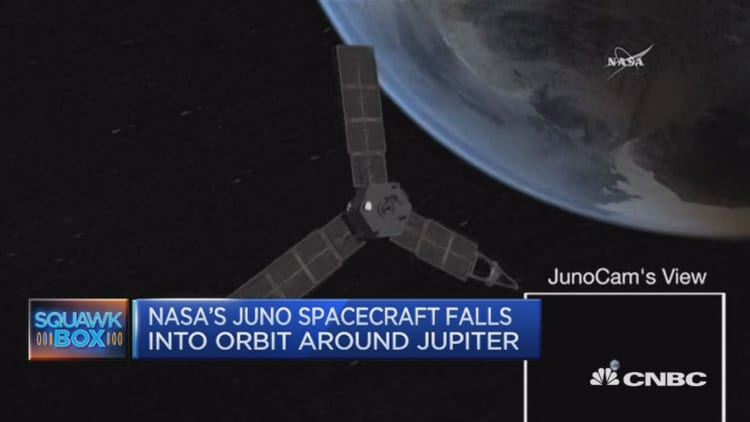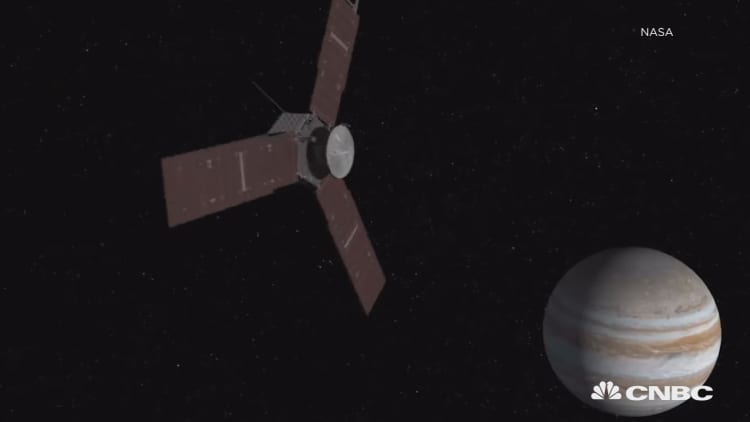
NASA'S Juno spacecraft capped a five-year journey to Jupiter on Monday with a do-or-die engine burn that looped it into orbit to probe the origins of the biggest planet in the solar system and how it impacted the rise of life on Earth, the U.S. space agency said.
Juno fired its main engine beginning at 11:18 p.m. EDT/0318 Tuesday GMT, slowing the spacecraft so it could be captured by the planet's gravity.
Launched from Florida nearly five years ago, Juno needed to be precisely positioned, ignite its main engine at exactly the right time and keep it firing for 35 minutes to become only the second spacecraft to orbit Jupiter.
If anything went even slightly awry, Juno would have sailed helplessly past Jupiter, unable to complete a $1 billion mission.
Once in position to begin its 20-month science mission, Juno will fly in egg-shaped orbits, each one lasting 14 days, to peer through the planet's thick clouds, map its gargantuan magnetic field and probe through the crushing atmosphere for evidence of a dense inner core.
The probe also will hunt for water in Jupiter's thick atmosphere, a key yardstick for figuring out how far away from the sun the gas giant formed.

Jupiter's origins, in turn, affected the development and position of the rest of the planets, including Earth and its fortuitous location conducive to the evolution of life.
Jupiter, which could hold 1,300 Earths, orbits five times farther from the sun than Earth, but it may have started out elsewhere and migrated, jostling its smaller sibling planets as it moved.
Earth and Mars were positioned at the right distance from the sun for liquid surface water, which is believed to be necessary for life. Scientists have been studying Mars to figure out why the planet lost its water.
Jupiter's immense gravity also diverts many asteroid and comets from potentially catastrophic collisions with Earth and the rest of the inner solar system.
"We are learning about nature, how Jupiter formed and what that tells us about our history and where we came from," said Juno lead scientist Scott Bolton, with the Southwest Research Institute in San Antonio.
NASA expects Juno to be in position for its first close-up images of Jupiter on Aug. 27, the same day its science instruments are turned on for a test run.
Only one other spacecraft, Galileo, has ever circled Jupiter, which is itself orbited by 67 known moons.


